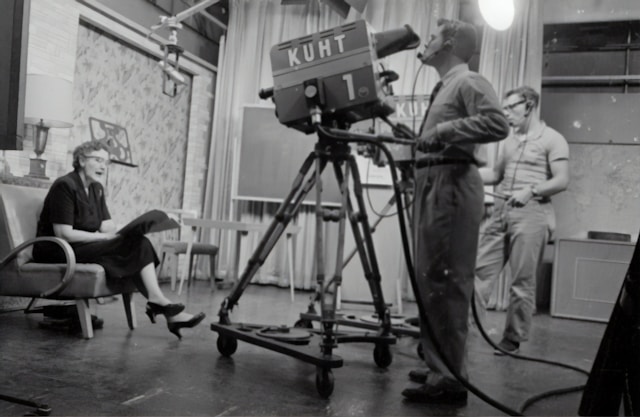Key Elements of Character-Driven TV Series
When it comes to character-driven TV series, one of the key elements that captivate viewers is the depth and complexity of the characters. Well-developed characters with compelling backstories, motivations, and flaws draw audiences into their world and create a strong emotional connection. Viewers become invested in the characters’ journeys, rooting for their successes and empathizing with their struggles.
Another essential element in character-driven TV series is the authenticity of the characters’ relationships and interactions. Strong character dynamics and relationships add richness to the storytelling, creating realistic and believable connections that drive the plot forward. Whether it’s friendships, romances, rivalries, or family bonds, these relationships shape the characters’ growth and contribute to the overall narrative arc of the series.
• Characters with depth and complexity draw in viewers
• Compelling backstories, motivations, and flaws create emotional connections
• Viewers become invested in characters’ journeys
• Authentic relationships drive the plot forward
• Strong character dynamics add richness to storytelling
• Friendships, romances, rivalries, and family bonds shape characters’ growth
Understanding Character Development in TV Shows
In TV shows, character development plays a crucial role in engaging viewers and driving the storyline forward. It is the process through which characters evolve, grow, and change over the course of the series. Well-developed characters are multi-dimensional, with a mix of strengths, weaknesses, motivations, and flaws that make them relatable and realistic to the audience. Through their actions, choices, and interactions with other characters, viewers get to see the complexities and nuances of their personalities.
Character development in TV shows is not just about showcasing a static persona but rather about showing the evolution and growth of individuals in response to the challenges and conflicts they face. It allows viewers to connect with the characters on a deeper level, empathize with their struggles, and root for their successes. By carefully crafting the arcs of these characters, TV writers can create compelling and memorable storylines that keep audiences invested in the narrative.
• Character development in TV shows is essential for engaging viewers and driving the storyline forward
• Well-developed characters are multi-dimensional, with a mix of strengths, weaknesses, motivations, and flaws
• Through their actions and interactions with other characters, viewers get to see the complexities of their personalities
• Character development is about showing the evolution and growth of individuals in response to challenges they face
• It allows viewers to connect with characters on a deeper level and empathize with their struggles
The Impact of Strong Character Arcs on Viewer Engagement
Character arcs play a crucial role in captivating viewers and keeping them emotionally invested in a TV series. When characters undergo significant growth and change over the course of a show, it creates a sense of development that resonates with the audience. Strong character arcs can evoke empathy, admiration, and various other emotions from viewers, forging a deep connection between them and the characters they are following. By presenting characters with challenges and opportunities for growth, TV writers are able to craft narratives that keep audiences engaged and eager to see how each character’s journey unfolds.
Viewers are drawn to strong character arcs because they add layers of complexity to the storytelling. Watching characters evolve and navigate through adversities or triumphs mirrors the human experience, making their narratives relatable and impactful. Whether it’s overcoming personal struggles, making difficult decisions, or experiencing profound transformations, well-developed character arcs provide a sense of realism and depth to TV series that resonates with viewers on a profound level. The ability to witness characters grow and change over time keeps audiences invested in the story, eagerly awaiting each twist and turn in the characters’ journeys.
• Strong character arcs create a sense of development that resonates with the audience
• Evokes empathy, admiration, and various other emotions from viewers
• Forges a deep connection between viewers and the characters they are following
Viewers are drawn to strong character arcs because they add layers of complexity to the storytelling. Watching characters evolve and navigate through adversities or triumphs mirrors the human experience, making their narratives relatable and impactful. Whether it’s overcoming personal struggles, making difficult decisions, or experiencing profound transformations, well-developed character arcs provide a sense of realism and depth to TV series that resonates with viewers on a profound level. The ability to witness characters grow and change over time keeps audiences invested in the story, eagerly awaiting each twist and turn in the characters’ journeys.
• Characters evolving through challenges mirror human experiences
• Well-developed character arcs provide realism and depth to TV series
• Keeps audiences eagerly awaiting each twist in characters’ journeys
Exploring the Importance of Character Relationships
In the realm of television storytelling, character relationships play a pivotal role in shaping the narrative landscape and evoking emotional connections from viewers. These relationships serve as the heartbeat of a TV series, driving the plot forward and adding layers of depth to the characters’ arcs. When crafted thoughtfully, character relationships can create intricate webs of tension, love, rivalry, and camaraderie that keep audiences invested in the unfolding drama. Whether it’s a romantic entanglement, a complicated family dynamic, or a turbulent friendship, the dynamics between characters not only mirror real-life interactions but also provide a rich tapestry for exploring themes of loyalty, betrayal, sacrifice, and redemption.
• Character relationships serve as the heartbeat of a TV series, driving the plot forward and adding depth to character arcs.
• Thoughtfully crafted relationships create intricate webs of tension, love, rivalry, and camaraderie that keep audiences invested in the drama.
• Whether romantic entanglements, family dynamics, or friendships, these dynamics mirror real-life interactions while exploring themes like loyalty and betrayal.
Analyzing Character Motivations in TV Series
Character motivations are at the core of driving the actions and decisions of characters in TV series. Understanding why a character behaves a certain way can provide valuable insights into their personality and how they interact with the story’s plot. Whether it be a desire for power, revenge, love, or validation, character motivations add depth and complexity to their actions, making them more relatable and engaging for viewers.
Examining character motivations can also shed light on their growth and development throughout the series. By revealing the driving forces behind a character’s actions, writers can create compelling storylines that challenge and shape the character over time. This exploration of motivations not only adds layers to the character but also allows viewers to connect with them on a deeper level, fostering a sense of investment and emotional attachment to their journey.
• Character motivations are essential in driving the actions and decisions of characters in TV series.
• Understanding why a character behaves a certain way provides insights into their personality and interactions with the plot.
• Motivations such as power, revenge, love, or validation add depth and complexity to characters’ actions.
• Examining character motivations can reveal growth and development throughout the series.
• Revealing driving forces behind actions helps create compelling storylines that shape characters over time.
The Role of Character Growth in Storytelling
Character growth is a fundamental aspect of storytelling that allows characters to evolve and develop throughout a TV series. By experiencing challenges and overcoming obstacles, characters are able to undergo personal transformations that keep viewers engaged and invested in their journeys. Whether it’s a protagonist overcoming their flaws or a supporting character finding redemption, character growth adds depth and complexity to the narrative, creating compelling arcs that resonate with audiences.
Furthermore, character growth serves as a driving force for the overall story, influencing the plot and shaping the direction of the narrative. As characters change and grow, their decisions and actions impact the unfolding events, leading to new conflicts and resolutions. This dynamic interplay between character development and storytelling not only adds layers of richness to the narrative but also keeps viewers emotionally invested in the progression of the characters they have come to care about.
• Character growth allows characters to evolve and develop throughout a TV series
• By experiencing challenges and overcoming obstacles, characters undergo personal transformations
• Character growth adds depth and complexity to the narrative, creating compelling arcs that resonate with audiences
• It serves as a driving force for the overall story, influencing the plot and shaping the direction of the narrative
• Characters changing and growing impact unfolding events, leading to new conflicts and resolutions.
Unpacking Complex Characters in TV Dramas
Complex characters in TV dramas play a crucial role in captivating audiences and enhancing the overall viewing experience. These characters are multi-dimensional, possessing a mixture of virtues, flaws, and conflicting motivations that make them feel more realistic and relatable to viewers. By delving into the layers of their personalities, TV writers are able to create characters that evolve and grow throughout the series, keeping audiences emotionally invested in their journeys.
One of the hallmarks of complex characters in TV dramas is their ability to defy stereotypes and expectations, challenging viewers’ perceptions and sparking thought-provoking discussions. These characters often navigate moral dilemmas, grapple with inner conflicts, and undergo profound transformations, showcasing the complexities of human nature in a compelling and engaging manner. As viewers witness the struggles and triumphs of these characters, they are drawn into a rich tapestry of storytelling that explores the depths of the human experience.
• Complex characters in TV dramas are multi-dimensional, possessing virtues, flaws, and conflicting motivations
• These characters evolve and grow throughout the series, keeping audiences emotionally invested
• They defy stereotypes and expectations, challenging viewers’ perceptions
• Complex characters often navigate moral dilemmas, grapple with inner conflicts, and undergo profound transformations
• Viewers are drawn into a rich tapestry of storytelling that explores the depths of the human experience
The Art of Creating Memorable TV Characters
Creating memorable TV characters is a delicate blend of skill and intuition. It requires writers to craft individuals who resonate with viewers on a deep emotional level, eliciting both empathy and fascination. These characters are not merely vehicles for moving the plot forward; they are the heart and soul of the story, driving the narrative with their distinctive personalities and motivations.
To achieve this, writers must imbue their characters with layers of complexity and nuance. By fleshing out their backstories, aspirations, fears, and flaws, characters become multidimensional beings that feel authentic and relatable to audiences. Memorable TV characters often possess a unique combination of strengths and weaknesses, allowing viewers to see themselves reflected in their struggles and triumphs. Ultimately, the art of creating memorable TV characters lies in the ability to evoke a genuine connection between the audience and the fictional world they inhabit.
• Crafting individuals who resonate with viewers on a deep emotional level
• Characters are the heart and soul of the story, driving the narrative forward
• Imbuing characters with layers of complexity and nuance
• Fleshing out backstories, aspirations, fears, and flaws to create multidimensional beings
• Unique combination of strengths and weaknesses in memorable TV characters
Examining Character Flaws and Redemption Arcs
Character flaws are an essential component of creating compelling and relatable characters in TV series. These imperfections humanize the characters, making them more multi-dimensional and realistic. Flaws can range from moral shortcomings to personal vulnerabilities, adding depth to the character’s personality. By presenting characters with flaws, viewers can connect with their struggles and empathize with their journey towards redemption.
Redemption arcs are powerful storytelling tools that allow characters to evolve and grow over the course of a TV series. These arcs often involve a character confronting their flaws, making mistakes, and ultimately seeking forgiveness or redemption. Through these transformative journeys, viewers can witness the characters’ internal struggles and moral dilemmas, adding complexity to their narrative and fostering emotional investment from the audience.
• Character flaws humanize the characters and make them more realistic
• Flaws can range from moral shortcomings to personal vulnerabilities
• Viewers can connect with characters’ struggles and empathize with their journey towards redemption
• Redemption arcs allow characters to evolve and grow over the course of a TV series
• These arcs involve confronting flaws, making mistakes, and seeking forgiveness or redemption
• Transformative journeys add complexity to narrative and foster emotional investment from audience
The Power of Character Dynamics in Driving Plot
Character dynamics play a vital role in propelling the plot forward in TV series. The interactions, relationships, conflicts, and alliances between characters create tension, drama, and intrigue that keep viewers engaged. When well-developed characters with distinct personalities and motivations collide, the story takes on new dimensions, bringing about unexpected twists and turns that drive the narrative in compelling ways.
Additionally, character dynamics offer insight into the complex web of emotions, desires, and intentions that shape the characters’ actions and decisions. By delving into the intricacies of these dynamics, TV shows can explore themes of loyalty, betrayal, love, rivalry, and redemption, adding depth and richness to the storytelling. Viewers become emotionally invested in the characters’ journeys as they navigate the challenges and conflicts that arise from their interactions, making the viewing experience all the more immersive and impactful.
• Character dynamics create tension, drama, and intrigue in TV series
• Well-developed characters with distinct personalities drive the narrative forward
• Interactions between characters bring about unexpected twists and turns
• Insights into emotions, desires, and intentions shape character actions and decisions
• Themes of loyalty, betrayal, love, rivalry, and redemption are explored through character dynamics
• Viewers become emotionally invested in characters’ journeys as they navigate challenges
Character-Driven vs. Plot-Driven TV Series: A Comparison
Character-driven TV series focus on the internal growth and evolution of the characters within the story. These shows prioritize the development of complex and multidimensional characters whose personalities, motivations, and relationships drive the narrative forward. Viewers become emotionally invested in the characters’ journeys and are drawn to the intricate nuances of their psychological makeup, making the character development the core of the storytelling.
In contrast, plot-driven TV series place a greater emphasis on the events and external conflicts that propel the story forward. The narrative arc is often structured around a central mystery, action sequence, or dramatic event that serves as the primary driving force of the plot. While characters in plot-driven shows still play a crucial role, their development may take a backseat to the twists and turns of the overarching storyline, with the focus shifting more towards the resolution of conflicts rather than the internal growth of the characters.
• Character-driven TV series focus on the internal growth and evolution of the characters within the story
• These shows prioritize the development of complex and multidimensional characters
• Viewers become emotionally invested in the characters’ journeys
• Plot-driven TV series place a greater emphasis on events and external conflicts that propel the story forward
• The narrative arc is often structured around a central mystery, action sequence, or dramatic event
• Characters in plot-driven shows still play a crucial role
• Focus shifts more towards resolution of conflicts rather than internal growth
The Evolution of Character-Driven Storytelling in TV
In the landscape of television storytelling, there has been a notable shift towards character-driven narratives in recent years. Show creators and writers have increasingly recognized the power of deeply developed characters in captivating audiences and driving the emotional core of a series. This evolution can be seen across various genres, from dramas to comedies, as viewers crave more nuanced and multi-dimensional characters who undergo growth and transformation throughout the course of a story.
One significant factor contributing to the rise of character-driven storytelling in TV is the increasingly sophisticated tastes of audiences. Viewers today are drawn to complex and flawed characters who reflect the intricacies of real life. As such, shows that prioritize character development over plot twists or gimmicks are gaining traction and earning critical acclaim. This shift signifies a deeper appreciation for the human experience portrayed on screen, where the evolution of characters becomes just as compelling, if not more so, than the events that unfold around them.
• Audiences are drawn to complex and flawed characters
• Shows that prioritize character development over plot twists are gaining traction
• Viewers have a deeper appreciation for the human experience portrayed on screen
Another key factor driving the evolution of character-driven storytelling in TV is the rise of streaming platforms. With the advent of services like Netflix, Hulu, and Amazon Prime Video, viewers now have access to a vast library of content at their fingertips. This has created a competitive landscape where shows must stand out not only through gripping plots but also through well-developed characters that keep audiences invested for multiple seasons.
• Streaming platforms provide access to a wide range of content
• Shows must stand out with well-developed characters
• Audience investment in characters leads to long-term viewership
Moreover, social media has played a significant role in shaping the way stories are told on television. Platforms like Twitter and Instagram allow fans to engage with their favorite shows in real-time, creating communities around beloved characters and storylines. Show creators are increasingly attuned to fan reactions and feedback, which can influence how characters evolve over time based on audience reception.
• Social media allows fans to engage with shows in real-time
• Fan reactions can influence character development
• Creators take into account audience feedback for character evolution
Diving Deep into Character Backstories
Exploring a character’s backstory is a crucial aspect of character development in TV series. By delving into a character’s past, viewers gain a deeper understanding of their motivations, fears, and desires. Backstories provide context for a character’s actions and decisions in the present storyline, adding layers of complexity and richness to their personality.
A well-crafted backstory can humanize even the most enigmatic characters, allowing viewers to empathize with their struggles and conflicts. Whether revealing a traumatic childhood experience or a transformative life event, character backstories create a sense of emotional connection between the audience and the character. The unraveling of a character’s past often serves as a driving force in shaping their present journey and evolution throughout the series.
• Character backstories provide context for their actions and decisions
• Backstories add layers of complexity and richness to a character’s personality
• Well-crafted backstories can humanize even enigmatic characters
• Backstories create emotional connection between audience and character
• The unraveling of a character’s past shapes their present journey and evolution in the series
The Psychology Behind Fan Attachments to TV Characters
When it comes to the psychology behind fan attachments to TV characters, one key factor is the emotional connection that viewers build with these fictional personas. This connection often stems from seeing aspects of themselves or their own experiences reflected in the characters, leading to a sense of empathy and understanding that deepens over time. As viewers witness the struggles, triumphs, and growth of these characters, they become invested in their stories, forming a bond that can feel as real as relationships with people in the real world.
Another psychological aspect of fan attachments to TV characters is the role of escapism and wish fulfillment. Viewers are drawn to characters who live out fantasies or exhibit traits that they aspire to possess. Watching these characters navigate challenges and overcome obstacles can provide a sense of vicarious satisfaction and empowerment for viewers, creating a sense of fulfillment and joy. This escapism allows fans to temporarily step outside of their own lives and immerse themselves in the world of the TV show, forging a connection that can be deeply meaningful and impactful.
• Viewers build an emotional connection with TV characters by seeing aspects of themselves reflected in the characters
• Witnessing the struggles, triumphs, and growth of characters deepens the bond between viewers and the fictional personas
• Escapism and wish fulfillment play a role in fan attachments to TV characters
• Fans are drawn to characters who live out fantasies or possess traits they aspire to have
• Watching characters overcome challenges can provide vicarious satisfaction and empowerment for viewers
Character-driven TV Series and Cultural Representation
In the realm of television storytelling, the depiction of cultural diversity and representation plays a crucial role in shaping the authenticity and relatability of characters within character-driven series. By incorporating diverse backgrounds, experiences, and identities into the fabric of a show’s narrative, creators can imbue their characters with a depth and richness that resonates with viewers from various cultural backgrounds. Characters that authentically reflect the diversity of real-life communities not only enhance the storytelling experience but also pave the way for underrepresented voices to be heard and celebrated on screen.
Cultural representation within character-driven TV series goes beyond surface-level diversity; it delves into the complexities of identity, heritage, and belonging that shape the characters’ motivations, relationships, and personal growth throughout the narrative. Through nuanced portrayals of cultural nuances, traditions, and struggles, these series not only entertain audiences but also create a platform for dialogue and understanding across different cultural divides. By humanizing characters from diverse backgrounds and exploring their unique journeys, character-driven TV shows have the power to challenge stereotypes, foster empathy, and inspire meaningful conversations about the interconnectedness of human experiences.
• Character-driven TV series that authentically represent cultural diversity enhance the storytelling experience for viewers.
• By incorporating diverse backgrounds and identities, creators can imbue their characters with depth and relatability.
• Cultural representation in TV shows goes beyond surface-level diversity to explore identity, heritage, and belonging.
• Nuanced portrayals of cultural nuances create a platform for dialogue and understanding across different cultural divides.
• Humanizing characters from diverse backgrounds challenges stereotypes and fosters empathy among audiences.
The Influence of Characters on Audience Emotions
Viewers often form deep emotional connections to their favorite TV show characters, often feeling a sense of empathy towards their struggles and triumphs. When characters are well-developed and relatable, audiences tend to invest emotionally in their journeys, experiencing a range of feelings from joy and excitement to sorrow and anger. These strong emotional bonds can lead viewers to become deeply attached to characters, rooting for their successes and feeling devastated by their failures.
The ways in which characters navigate challenges, grow, and evolve can significantly impact audience emotions. Whether it’s witnessing a character’s redemption arc, experiencing their moments of vulnerability, or celebrating their victories, viewers are often deeply affected by the highs and lows of a character’s narrative journey. Through these emotional connections, characters have the power to evoke empathy, inspire admiration, and provoke a visceral response from audiences, ultimately enriching the viewing experience and creating lasting impressions.
• Viewers often form deep emotional connections to their favorite TV show characters
• Audiences invest emotionally in well-developed and relatable characters’ journeys
• Strong emotional bonds lead viewers to root for character successes and feel devastated by failures
• Character development impacts audience emotions significantly
• Witnessing a character’s redemption arc, vulnerability, or victories can deeply affect viewers
• Characters have the power to evoke empathy, inspire admiration, and provoke visceral responses from audiences
Character Development Techniques Used by TV Writers
Creating compelling and multi-dimensional characters is a crucial aspect of crafting engaging TV series. TV writers employ various techniques to develop their characters and bring them to life on screen. One common technique is giving characters well-defined motivations and goals that drive their actions throughout the story. By establishing clear objectives for each character, writers can ensure that their actions and decisions resonate authentically with viewers.
Additionally, TV writers often use character relationships to further develop their characters. By exploring the dynamics between characters and how they interact with one another, writers can reveal new layers of their personalities and delve into their motivations. Whether it’s a complex romantic relationship, a fraught familial bond, or a loyal friendship, these interactions help to shape the characters and provide insight into their inner worlds.
• Characters are given well-defined motivations and goals to drive their actions
• Clear objectives ensure actions and decisions resonate authentically with viewers
• Character relationships are used to develop characters further
• Exploring dynamics between characters reveals new layers of personalities
• Interactions such as romantic relationships, familial bonds, or friendships shape characters
Character-Centric Episodes: A Closer Look
Character-centric episodes serve as a powerful tool for delving deep into a character’s psyche, giving viewers a closer look at their inner struggles, aspirations, and growth. These episodes are a chance for the audience to connect on a more intimate level with the characters they have come to love and understand their complexities beyond the surface. By focusing solely on one character, the narrative can explore their past, present, and future, allowing for a rich exploration of their motivations and flaws.
Through character-centric episodes, TV shows can highlight the unique traits and experiences that make each character stand out, offering a deeper understanding of their choices and actions throughout the series. By shining a spotlight on a particular character, these episodes provide valuable insight into their development and evolution, ultimately enriching the overall storytelling experience for viewers.
• Character-centric episodes allow for a deep dive into a character’s psyche
• Viewers can connect on a more intimate level with their favorite characters
• These episodes explore motivations, flaws, and growth of the character
• Highlighting unique traits and experiences that shape the character
• Provide valuable insight into the development and evolution of the character
The Impact of Character Deaths on TV Fanbases
Character deaths in TV series can evoke strong emotional reactions from viewers, often leading to intense discussions and debates within fan communities. When a beloved character meets their demise, fans may experience feelings of shock, grief, and even anger towards the show’s creators. The impact of character deaths on TV fanbases goes beyond just the loss of a fictional figure; it can spark debates about storytelling choices, character development, and the overall direction of the series.
The way in which a character’s death is handled by TV writers can significantly impact viewer engagement and loyalty. A well-executed death scene can add depth to a show’s narrative, evoke powerful emotions in the audience, and even lead to new avenues for character development and plot twists. On the other hand, poorly executed character deaths may alienate fans, leading to a decline in viewership and a loss of trust in the show’s creators. Understanding the delicate balance between shocking viewers and honoring the integrity of a character’s journey is crucial in navigating the complex terrain of character deaths in TV series.
• The emotional reactions from viewers can lead to intense discussions and debates within fan communities
• Fans may experience shock, grief, and anger towards the show’s creators
• Character deaths spark debates about storytelling choices, character development, and the overall direction of the series
The impact of character deaths on TV fanbases goes beyond just the loss of a fictional figure; it can spark debates about storytelling choices, character development, and the overall direction of the series. The way in which a character’s death is handled by TV writers can significantly impact viewer engagement and loyalty. A well-executed death scene can add depth to a show’s narrative, evoke powerful emotions in the audience, and even lead to new avenues for character development and plot twists.
On the other hand, poorly executed character deaths may alienate fans leading to a decline in viewership and a loss of trust in the show’s creators. Understanding this delicate balance between shocking viewers and honoring the integrity of a character’s journey is crucial in navigating through complex terrain when dealing with character deaths in TV series.
The Future of Character-Driven TV Series
With the ever-growing demand for immersive storytelling and relatable content, character-driven TV series are poised to continue captivating audiences in the future. As viewers seek more profound connections with the stories they consume, the focus on well-developed and multi-dimensional characters will remain paramount for creators and showrunners. Emphasizing characters’ internal struggles, growth, and relationships will not only enrich the narrative but also foster emotional investment from the audience.
In the coming years, we can expect character-driven TV series to push boundaries and explore a wider range of diverse perspectives and experiences. As the industry recognizes the importance of authentic representation and inclusivity, television shows will increasingly showcase complex characters from various backgrounds and cultures. This shift towards more inclusive storytelling will not only enrich the viewing experience but also offer a platform for underrepresented voices to be heard and celebrated.
• As viewers seek deeper connections with the stories they consume, character-driven TV series will continue to be in high demand
• Emphasizing well-developed and multi-dimensional characters enhances the narrative and fosters emotional investment from the audience
• In the future, character-driven TV series will push boundaries by exploring a wider range of diverse perspectives and experiences
• The industry’s recognition of authentic representation and inclusivity will lead to more complex characters from various backgrounds being showcased on television
• This shift towards inclusive storytelling not only enriches the viewing experience but also amplifies underrepresented voices for celebration




